Spray painting a car radiator is a topic that often piques curiosity among car enthusiasts and DIYers. While it may seem like a straightforward task, there are several important considerations to bear in mind.
First and foremost, before deciding to spray paint your car radiator, it’s crucial to evaluate the condition of the radiator itself. Inspect it for any signs of damage or corrosion that may require professional attention or replacement. Additionally, consider the type of paint you plan to use and ensure it is suitable for high-temperature applications to prevent any adverse effects on the radiator’s functionality.
Furthermore, proper preparation is key to achieving satisfactory results. Thoroughly clean the radiator surface, removing any dirt, grease, or old paint. Use sandpaper or a wire brush to create a smooth and clean surface for the paint to adhere to. Applying a primer specifically formulated for metal surfaces can also help improve the durability and longevity of the paint job.
When it comes to the actual painting process, take care to apply thin, even coats of paint, allowing each layer to dry completely before proceeding to the next. This will help prevent drips, runs, or uneven coverage. It’s also essential to choose a well-ventilated area to ensure proper air circulation and minimize the inhalation of paint fumes.
Lastly, keep in mind that spray painting your car radiator may have certain consequences. While it can enhance the aesthetic appeal of the radiator and complement the overall look of your vehicle, it may also affect the radiator’s heat dissipation capabilities if the paint obstructs the fins or other crucial components. Therefore, it’s vital to strike a balance between appearance and functionality.
In conclusion, spray painting a car radiator can be a rewarding DIY project, but it requires careful consideration and attention to detail. By assessing the radiator’s condition, preparing the surface properly, using suitable paint, and applying it with precision, you can achieve a visually appealing result while ensuring optimal radiator performance.
Role of a Car Radiator
The radiator is an absolutely crucial component in a car’s cooling system. It plays a vital role in preventing the engine from overheating, ensuring smooth and efficient operation. By efficiently dissipating the heat generated from the engine’s coolant, the radiator helps maintain an optimal operating temperature.
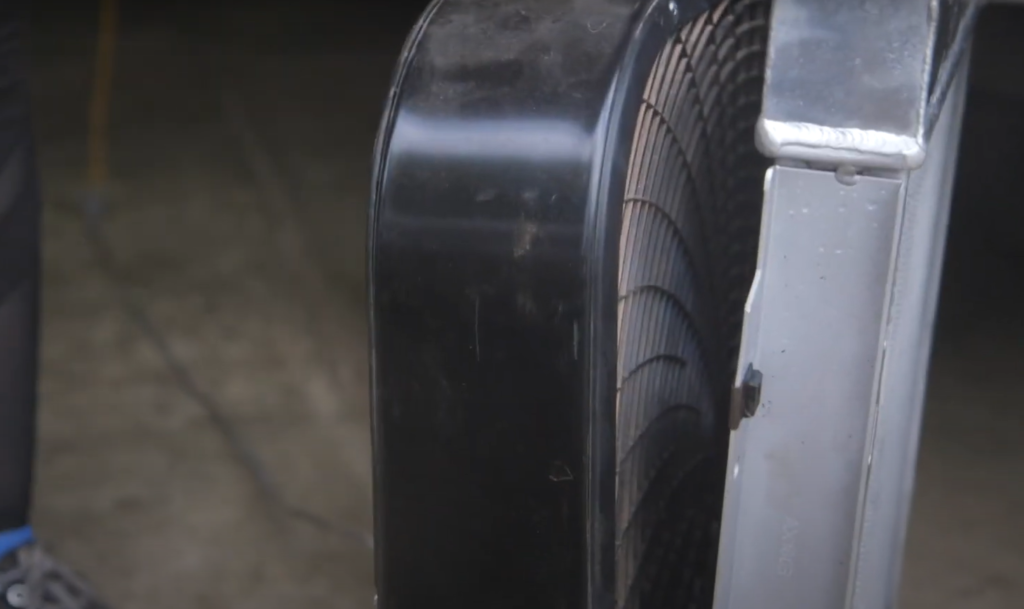
As the coolant circulates through the engine, it absorbs the excess heat produced during combustion. This hot coolant then flows into the radiator, where it undergoes a process of cooling. The radiator achieves this by utilizing the airflow created by the car’s forward motion and, when the car is stationary, by employing a fan to direct cool air over the heated surfaces.
The cooled coolant, having shed its excess heat, is then recirculated back into the engine. This continuous cycle of heat absorption, dissipation, and recirculation ensures that the engine operates within the desired temperature range, optimizing performance and longevity.
In summary, the radiator not only prevents engine overheating but also plays a critical role in maintaining the overall health and efficiency of the car’s cooling system. It is a key component that keeps the engine running smoothly and ensures a trouble-free driving experience.[1]
Why Painting The Car Radiator Black Is A Good Idea
Painting your car radiator black is generally considered beneficial due to the principles of physics. Black surfaces, specifically, are known to be excellent absorbers as well as emitters of heat. This means that a black radiator can absorb heat more quickly from the coolant and also radiate it effectively into the surrounding air, resulting in a more efficient cooling process.
However, it’s important to note that while this efficiency boost is typically minimal, other factors such as the type and quality of paint used also play a crucial role in determining the effectiveness of this method. The choice of paint can impact the radiator’s ability to absorb and radiate heat efficiently. Opting for high-quality heat-resistant paint, for example, can further enhance the radiator’s thermal properties.
Additionally, painting the radiator can offer more than just improved heat transfer. It can also add a layer of protection against corrosion and rust, potentially extending the radiator’s lifespan. This added benefit ensures that not only does the radiator perform better in terms of cooling, but it also remains in good condition for a longer period of time.
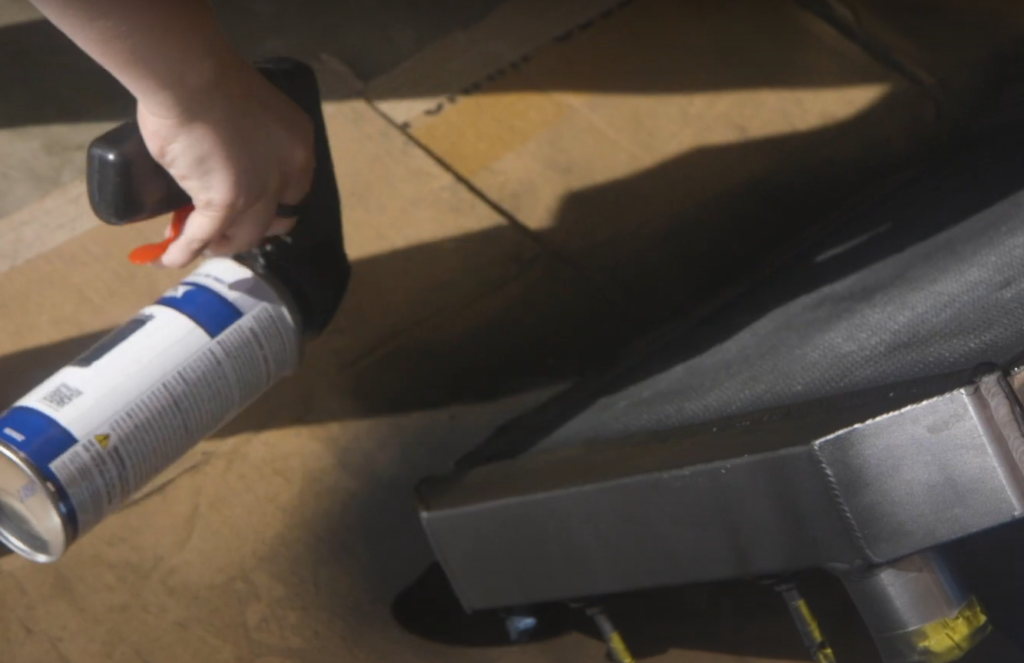
In summary, while painting a car radiator black can provide some thermal advantages by enhancing heat absorption and radiation, it’s crucial to consider the type and quality of paint used, as well as the additional protection against corrosion. These factors collectively contribute to the overall effectiveness and longevity of the radiator, ultimately ensuring optimal performance and durability.[1]
A Step-By-Step Guide
Drain the Coolant
Draining the coolant is an essential and crucial step that should not be overlooked before you begin the radiator painting process. Not only is it important from a safety perspective, but it also ensures a clean and efficient job, resulting in a beautifully painted radiator.
Here’s a step-by-step guide on how to drain the coolant properly:
- Locate the Drainage Valve: Take a moment to locate the drainage valve or petcock, which is typically situated at the base of the radiator. If you’re unsure about its exact location, referring to your vehicle’s manual will provide the necessary guidance.
- Prepare a Drainage Pan: Before you start draining the coolant, position a suitable drainage pan or bucket underneath the radiator. It’s essential to ensure that the pan is large enough to accommodate the volume of coolant present in the system. This precaution will help prevent any spillage and make the process more manageable.
- Open the Drainage Valve: With a wrench in hand, carefully and gently unscrew the drainage valve. This action will allow the coolant to flow out smoothly and efficiently. Remember to wear gloves and eye protection during this step, as coolant can be harmful if it comes into contact with your skin or eyes.
- Exercise Patience: It’s important to be patient during this process. Allow the coolant to completely drain into the pan. The time required for draining can vary depending on the system’s size, so be prepared to wait until the coolant flow stops entirely. Rushing this step may leave residual coolant and hinder the effectiveness of the painting process.
- Dispose of the Coolant Responsibly: Once the coolant has been successfully drained, it’s crucial to dispose of it responsibly. Contact your local waste disposal service to understand the best and most environmentally friendly method for disposal. They will provide guidance on how to safely handle and dispose of the coolant, ensuring minimal impact on the environment.
Remember, never leave the drained coolant unattended, especially if you have pets around.
Taking the necessary precautions to keep pets away from the drained coolant is vital for their safety.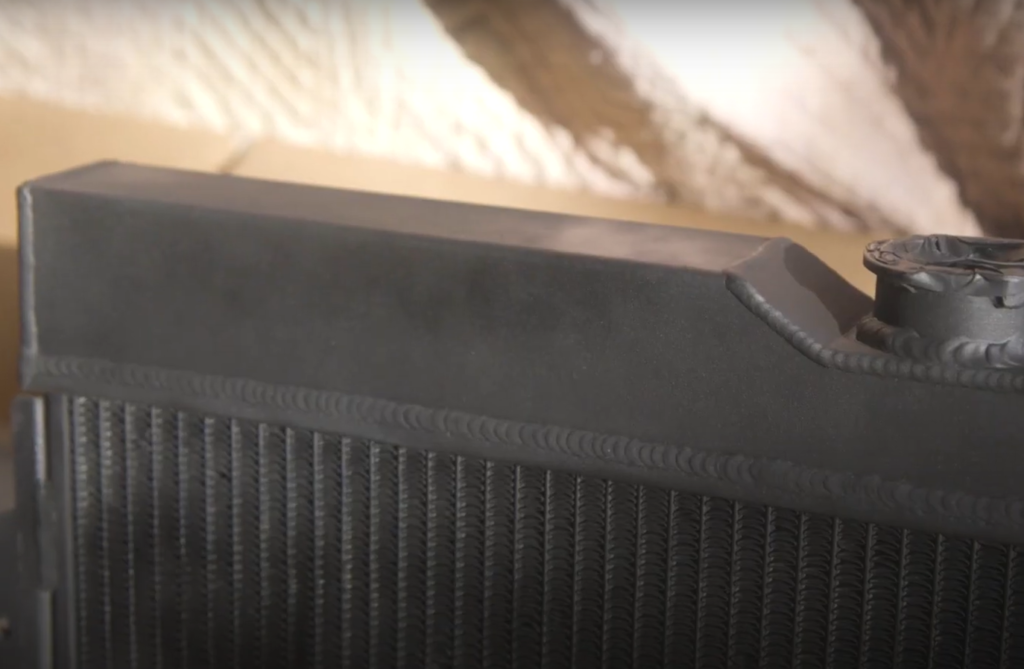
By following these detailed steps, you can confidently and effectively drain the coolant from your radiator, setting the stage for a successful and satisfying radiator painting project.
Disconnect the radiator
After draining the coolant, the next important step in the radiator removal process is to disconnect the radiator from the car’s engine. This step is critical and requires careful attention to ensure no damage is done to any components. Here is a detailed guide to help you successfully complete this process:
- Disconnect the Battery: Start by disconnecting the car battery. This is a safety measure that prevents any accidental electrical shorting during the removal process.
- Remove the Radiator Fan: Depending on your specific car model, the radiator fan may be mounted on the radiator and need to be removed for better access. Refer to your vehicle’s manual for detailed instructions tailored to your car. In general, the process involves unplugging the fan’s electrical connections, removing any screws or bolts securing the fan, and then carefully extracting the fan.
- Disconnect Radiator Hoses: Locate the upper and lower radiator hoses, which are usually secured with clamps. To remove them, use pliers to compress the clamps and slide them away from the radiator. Then, gently pull the hoses off the radiator ports. It’s important to note that some coolant may spill out during this process, so make sure to have a pan ready to catch any spills.
- Remove the Radiator: With the hoses and fan detached, you can now proceed to remove the radiator itself. This typically involves removing a few bolts or fasteners that secure the radiator to the vehicle. Once these bolts are removed, carefully lift the radiator straight up and out of the car.
Remember to keep track of all the screws, bolts, and other components you remove during this process. Organizing them in a parts tray or a similar container can help ensure that nothing gets lost. Additionally, it’s crucial to dispose of any leftover coolant responsibly, as it is considered a hazardous substance.
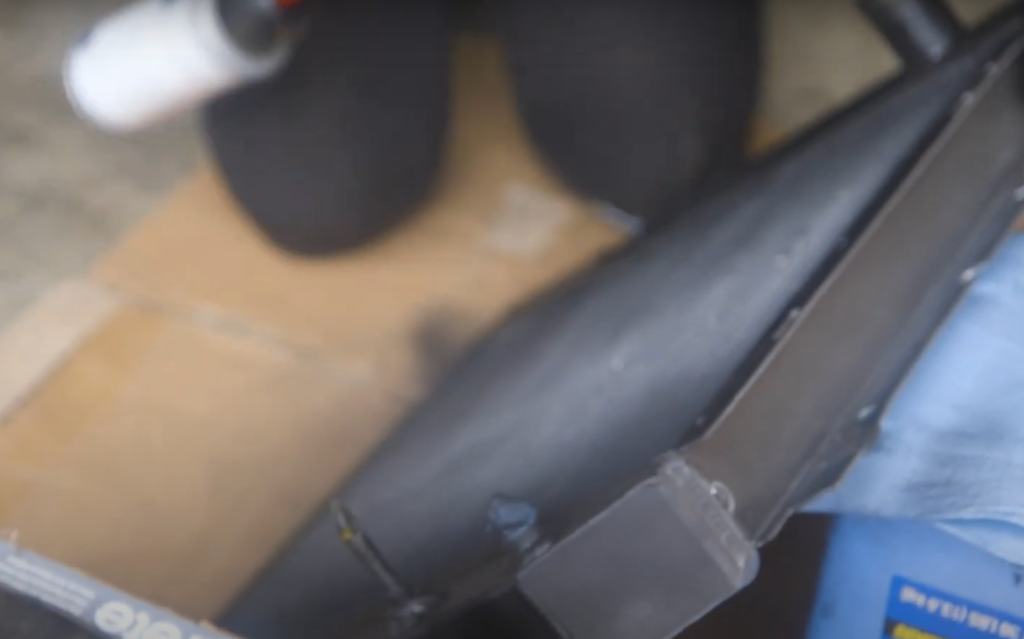
By following these detailed steps, you can confidently and safely disconnect the radiator from your car’s engine.
Clean the radiator
Cleaning the radiator is a crucial step before applying paint, as it ensures the surface is meticulously free from dirt, grime, and rust that could compromise the adhesion of the paint. By following these steps, you can effectively clean your radiator and prepare it for a flawless paint job:
- Brush Off Loose Dirt and Rust: Begin by using a wire brush or a similar tool to meticulously remove any loose dirt, grime, and rust from the surface of the radiator. Be thorough in this process, ensuring that you don’t damage the delicate radiator fins.
- Rinse the Radiator: Once you have removed the loose dirt and rust, proceed to rinse the radiator with warm water. This step will help to eliminate any remaining residue and ensure a clean surface. However, it’s important to avoid using high-pressure water jets, as they can potentially damage the radiator fins.
- Utilize a Radiator Cleaner: For stubborn deposits that brushing and rinsing may not completely remove, it is recommended to apply a radiator cleaner according to the manufacturer’s instructions. This specialized cleaner will effectively dissolve any remaining grime and ensure a pristine radiator surface. Once the cleaning agent has done its job, make sure to rinse the radiator thoroughly.
- Dry the Radiator: After completing the cleaning process, it is vital to allow the radiator to air dry naturally. However, if you’re looking to expedite the drying process, you can use an air compressor or a hairdryer set on a cool setting. Just remember to ensure that the radiator is completely dry before proceeding to the next step.
Remember, during the cleaning process, it is highly recommended to wear protective gloves to safeguard your skin from any harsh residues or cleaning agents. Taking these precautions will help you achieve a thoroughly cleaned radiator, ready for a flawless paint application.
Strip the old paint
Stripping the old paint is a key step before repainting your radiator. This ensures that the new paint adheres properly and lasts longer. Follow these steps to strip the old paint:
- Wear Protective Gear: Stripping paint can be a messy job that involves harsh chemicals. Make sure you’re wearing protective gear, including gloves and safety glasses.
- Apply Paint Stripper: Use a brush to apply a generous coat of paint stripper onto the old paint surface. Ensure that you’re using a paint stripper that’s suitable for the type of paint on your radiator.
- Wait: Allow the paint stripper to sit and work for the time recommended by the manufacturer. This is usually between 10 to 30 minutes but can vary. You’ll notice the old paint starting to bubble and peel.
- Scrape Off the Old Paint: Using a plastic scraper, gently scrape off the old paint. Be careful not to damage the radiator while doing so.
- Rinse and Dry: After all the old paint has been removed, rinse the radiator thoroughly with warm water to remove any leftover stripper. Dry the radiator thoroughly before moving on to the next steps.
Remember, when using chemical paint strippers, work in a well-ventilated area and avoid contact with skin and eyes. Always follow the manufacturer’s instructions.
Clean the surface with mineral spirits
To prepare your radiator for painting, it’s important to use mineral spirits to ensure a smooth and clean surface. This helps eliminate any remaining grease or oily residue that could affect paint adhesion.
- Follow these steps:
- Wear protective gear,
- Apply mineral spirits using a lint-free cloth,
- Allow the radiator to dry completely.
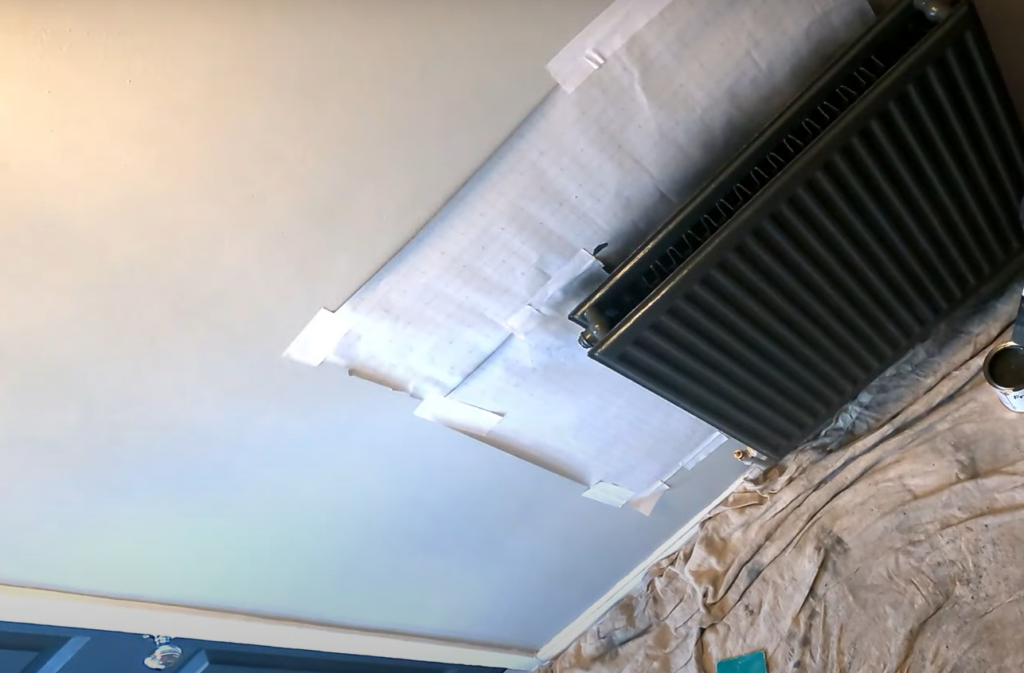
Remember to work in a well-ventilated area and avoid prolonged exposure to mineral spirits.
Apply a coat of primer
Applying primer to your radiator before painting is crucial for better paint adhesion and rust prevention. Follow these steps: choose the right primer, protect surrounding areas, apply the primer in a steady motion, allow it to dry, and sand the surface for a smooth finish. Remember to work in a well-ventilated area and take safety precautions.
Apply radiator spray paint
To give your radiator a fresh new look and protect it from rust and damage, follow these steps:
- Choose a heat-resistant spray paint designed for radiators.
- Protect surrounding areas with drop cloths or newspapers.
- Apply the paint evenly, using a steady sweeping motion, and remember to paint the back and sides.
- Allow the paint to dry for about 24 hours.
- Apply additional coats if needed, allowing each coat to fully dry before applying the next.
Remember to work in a well-ventilated area, wear protective gear, and keep the spray paint away from open flames or sparks.
Reinstall the Radiator
Here are the steps for reinstalling a repainted radiator:
- Prepare the area by cleaning and drying it.
- Carefully position the radiator back in place, aligning it with the brackets or wall mounts.
- Securely reattach the radiator using the necessary tools and hardware.
- Reconnect the plumbing, ensuring there are no leaks and using thread seal tape for a secure seal.
- Check for leaks and refill the radiator with the appropriate coolant.
- Test the radiator by switching it on and monitoring for any leaks or issues.
Remember, if unsure, consult a professional to avoid potential damage.[2]
Can You Use Normal Metal Paint On Radiators?
Regular metal paint is not suitable for painting radiators due to its inability to withstand high temperatures. It can lead to discoloration, peeling, cracking, or emitting fumes.
These paints ensure color integrity, adhesion, and durability. Opting for heat-resistant radiator paint guarantees longevity, aesthetic appeal, and safety.[2]Best Paints For Automotive Radiators
Choosing the right paint for your automotive radiator is crucial to ensure longevity and performance. Here are some top heat-resistant paints suitable for radiators:
- Rust-Oleum High Heat Spray Paint: Withstanding temperatures up to 2000°F, quick-drying, rust-resistant, and available in various colors.
- POR-15 High Temperature Heat Resistant Paint: Durable, resists temperatures up to 1200°F, prevents rust and corrosion.
- VHT SP102 FlameProof Coating: Withstands temperatures up to 2000°F, offers excellent resistance to cracking, chipping, and peeling.
- Dupli-Color Engine Enamel: Resists temperatures up to 500°F, available in multiple colors, and durable against oil, fluid, and salt.
Remember to choose a heat-resistant paint specifically designed for radiators to prevent discoloration, peeling, or cracking.[3]
Is It Safe To Paint Your Car’S Radiator?
Painting your car’s radiator is safe as long as you use heat-resistant paint designed for radiators. Using the wrong paint can damage the radiator and affect its performance.
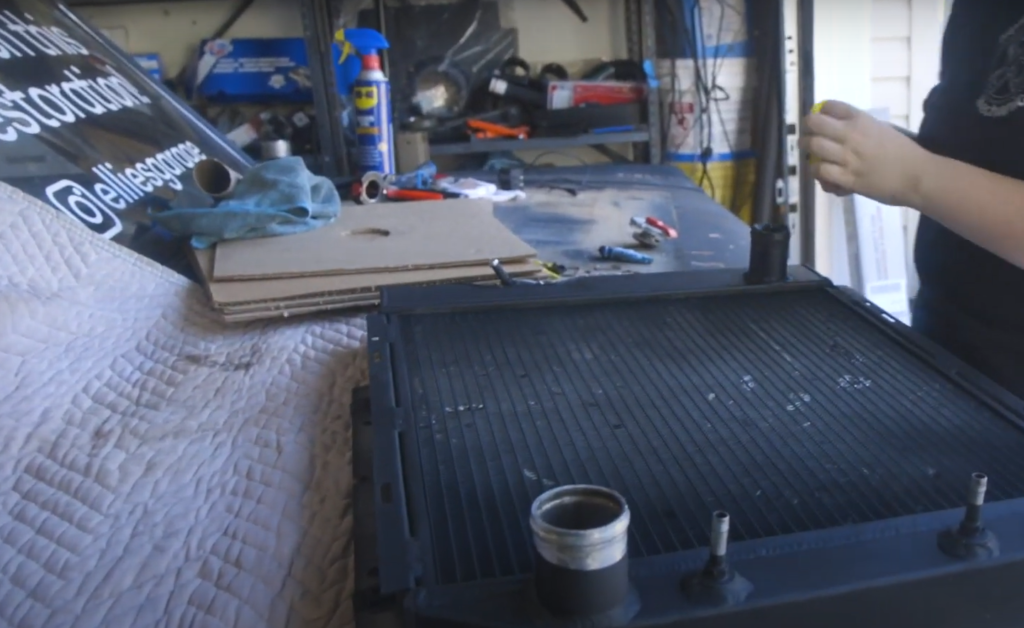
To ensure success, prepare the surface, apply the paint carefully, and let it cure fully. Properly done, painting the radiator can extend its lifespan, enhance its appearance, and improve your vehicle’s engine bay.
How to Test a Radiator for Congestion
Testing a radiator for congestion is an important maintenance step to ensure proper functioning of your vehicle’s cooling system. Follow these steps: allow the engine to cool down, remove the radiator cap, check the coolant level, inspect for debris, run the engine, and check the temperature. If congestion is observed, consult a professional mechanic for assistance. Regular checks and maintenance can help prevent congestion and prolong the life of your vehicle’s cooling system.[3]
FAQ
Is it safe to spray paint a radiator?
To safely spray paint a radiator, take proper precautions and use heat-resistant paint designed for radiators. Clean the radiator thoroughly to ensure proper adherence. Paint in a well-ventilated area and allow the paint to dry completely before reinstalling. If unsure, consult a professional to avoid damage or health risks.
What happens if you spray paint a car radiator?
Spray painting a car radiator can enhance its appearance and protect it from rust and corrosion. However, it’s important to use heat-resistant paint specifically designed for radiators. Regular spray paint may not withstand high temperatures, leading to issues like discoloration, peeling, and harmful fumes. Incorrect painting can also impact radiator performance. To extend the radiator’s lifespan and improve its appearance, proper materials and techniques must be used.
Is painting a car radiator a good idea?
Painting a car radiator can be a good idea if done correctly with the right materials. Heat-resistant paint can enhance the radiator’s appearance, protect against rust, and extend its lifespan. However, using the appropriate paint is crucial to prevent issues like discoloration or peeling. It’s important to clean the radiator thoroughly beforehand and seek professional help if needed.
What kind of spray paint can you use on a radiator?
Choosing the right spray paint for a radiator is crucial for a successful painting job.
Ensure the paint is suitable for radiators and follow the manufacturer’s instructions for best results.Is it better to paint or spray a radiator?
When deciding whether to paint or spray a radiator, consider your preferences, skill level, and circumstances. Spray painting offers an even finish and is easier to apply, especially in hard-to-reach areas. It dries quickly but requires good ventilation and protection against overspray. Painting with a brush provides more control, especially for intricate parts, and is less messy. It doesn’t need as much ventilation. Regardless of the method, use heat-resistant paint designed for radiators.
What happens if you paint a radiator with normal paint?
Using regular paint on a radiator can cause various problems like discoloration, peeling, and emitting harmful fumes due to high temperatures. It can also impact the radiator’s performance. It is not recommended despite the wide range of colors available.
Useful Video: Spray Painting My Radiator!! Getting The Mustang Race Ready!
Conclusion
Painting a car radiator can enhance its aesthetic appeal, prevent rust and corrosion, and increase its lifespan. Use heat-resistant paint designed for radiators, apply it evenly, and protect surrounding areas. If unsure, consult a professional. A well-executed paint job can transform your engine bay and extend your radiator’s life.
References:
- https://popularpainter.com/can-you-paint-a-car-radiator/
- https://paintplatform.com/can-you-spray-paint-car-radiator/
- https://itstillruns.com/paint-car-radiator-6472182.html


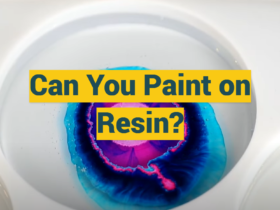

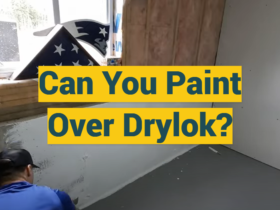
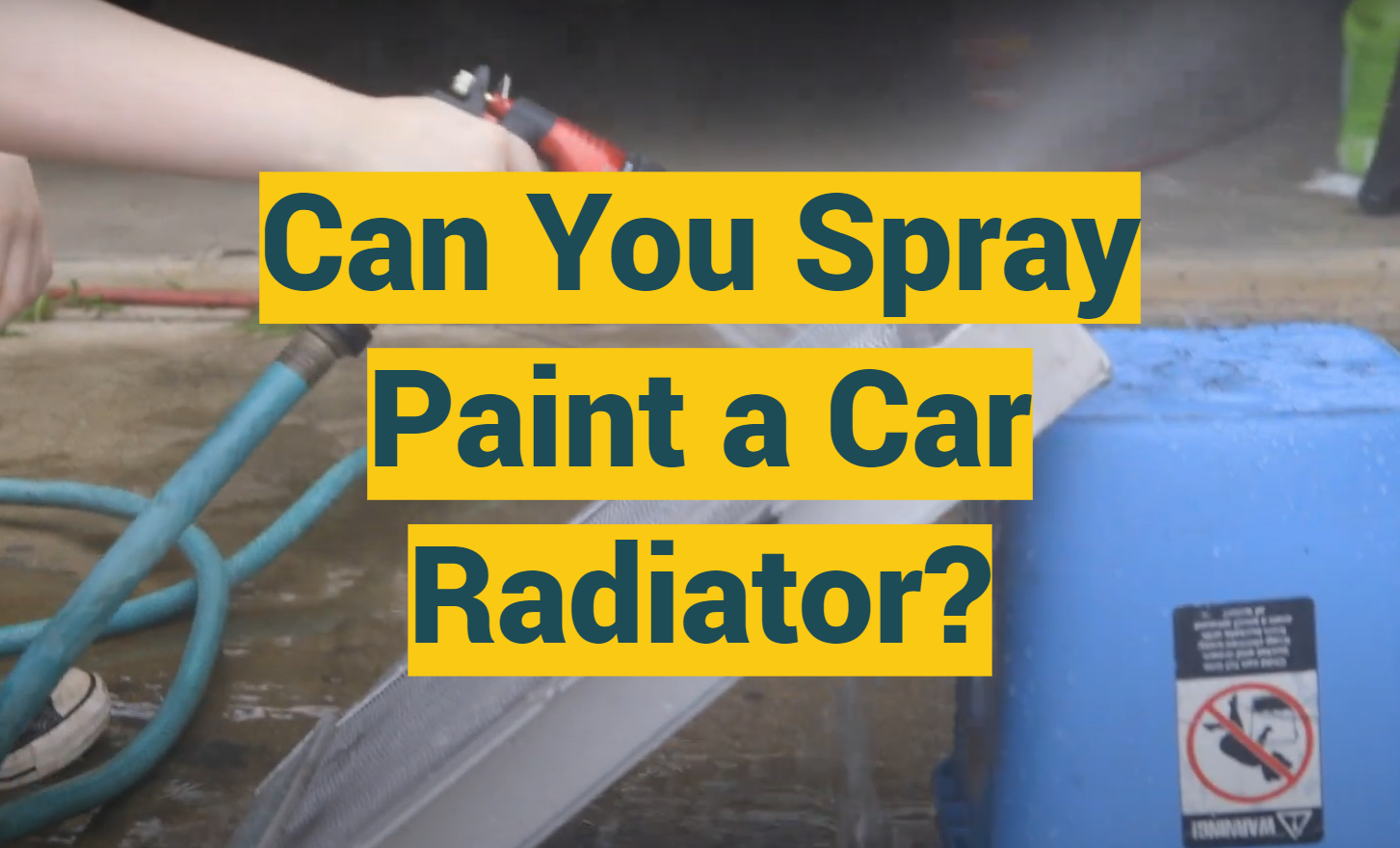




Leave a Review